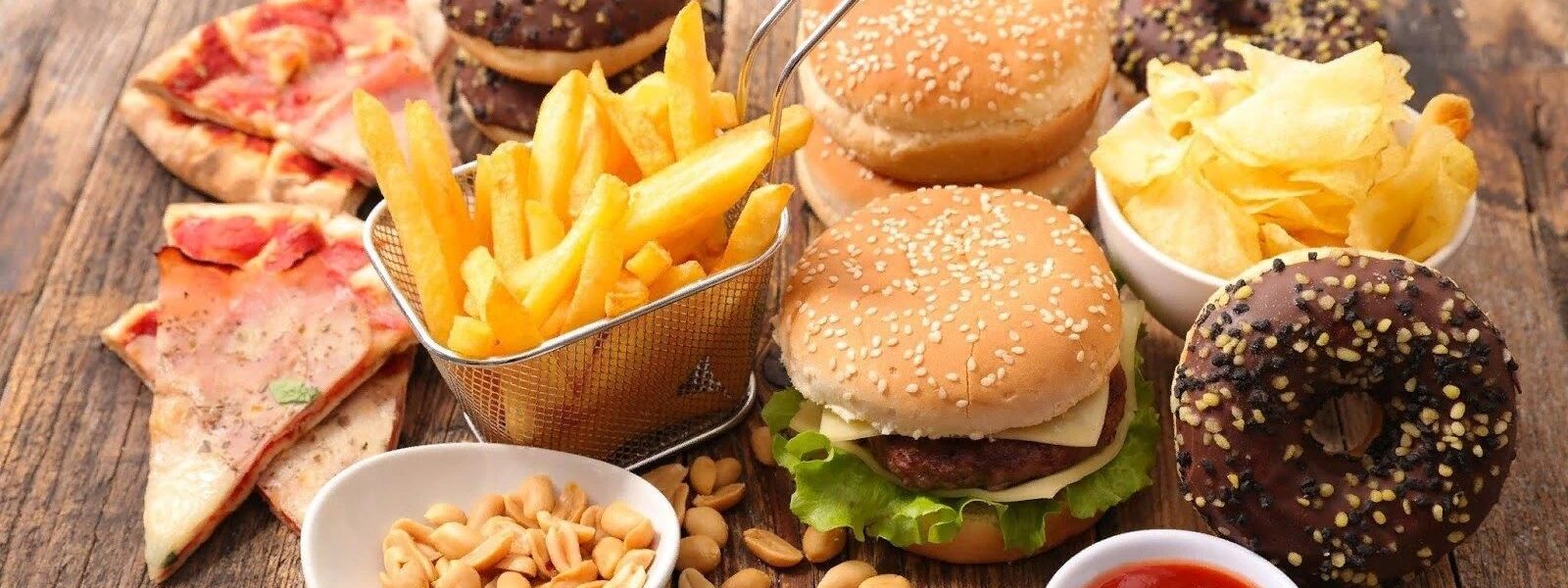Struggling to shed those extra pounds and reveal a leaner physique? You’re definitely not alone. The quest for the Best Diet To Cut Body Fat is a common goal, and thankfully, it’s absolutely achievable with the right approach. Forget fad diets and quick fixes; sustainable fat loss is about making informed choices and building healthy habits. This comprehensive guide will break down the science-backed strategies to help you effectively reduce body fat and keep it off for good.
Understanding Body Fat: Why It Matters and How to Cut It
Before diving into specific diets, let’s understand what body fat is and why reducing excess fat is beneficial. Body fat, or adipose tissue, is essential for energy storage, insulation, and hormone regulation. However, too much body fat, particularly visceral fat around the organs, can increase the risk of chronic diseases like heart disease, type 2 diabetes, and certain cancers.
Cutting body fat isn’t just about aesthetics; it’s about improving your overall health and well-being. The key to effective fat loss lies in creating a consistent calorie deficit, meaning you burn more calories than you consume. And the Best Diet To Cut Body Fat is one that helps you achieve this deficit sustainably while nourishing your body.

What is the most effective way to lose body fat through diet?
The most effective way to lose body fat through diet is by creating a calorie deficit while prioritizing nutrient-dense foods. This means consuming fewer calories than you burn, primarily through a combination of reducing processed foods, sugary drinks, and excessive unhealthy fats, and increasing intake of lean proteins, fruits, vegetables, and whole grains. Focusing on sustainable dietary changes rather than extreme restrictions is crucial for long-term success.

Key Principles of Any Effective Fat Loss Diet
While there isn’t a single “magic” diet, all successful fat loss diets share fundamental principles. Understanding these will empower you to choose and adapt a plan that works best for you.
- Calorie Deficit is King: To lose fat, you must consistently consume fewer calories than you expend. This forces your body to tap into stored fat for energy. You can achieve a calorie deficit by reducing calorie intake, increasing physical activity, or a combination of both.
- Prioritize Protein: Protein is crucial for preserving muscle mass during fat loss. It also increases satiety, helping you feel fuller for longer and reducing cravings. Aim for lean protein sources like chicken, fish, beans, lentils, and tofu.
- Don’t Fear Healthy Fats: While you’re aiming to reduce body fat, healthy fats are essential for hormone production, nutrient absorption, and overall health. Include sources like avocados, nuts, seeds, and olive oil in moderation. You can check out more about daily fat intake to lose weight to understand the right balance.
- Embrace Fiber-Rich Carbohydrates: Focus on complex carbohydrates from whole grains, fruits, and vegetables. These are packed with fiber, which aids digestion, promotes fullness, and provides sustained energy. Limit refined carbohydrates like white bread, sugary cereals, and pastries.
- Hydration is Key: Water is vital for countless bodily functions, including metabolism and fat burning. Staying well-hydrated can also help control appetite.

Balanced Plate for Effective Fat Loss Diet
Exploring Popular and Effective Diets for Fat Loss
Now, let’s explore some popular and scientifically-backed dietary approaches that can be highly effective for cutting body fat. Remember, the best diet to cut body fat is the one you can stick to consistently and that aligns with your lifestyle and preferences.
Low-Carbohydrate Diets
Low-carb diets, like the ketogenic diet and Atkins diet, restrict carbohydrate intake while emphasizing protein and fats. By drastically reducing carbs, your body shifts into a metabolic state called ketosis, where it primarily burns fat for fuel.
- Pros: Can lead to rapid initial weight loss, effective for some individuals in the short-term, may improve blood sugar control.
- Cons: Can be restrictive and difficult to maintain long-term for many, potential nutrient deficiencies if not planned carefully, “keto flu” side effects (fatigue, headache) are possible initially.
Mediterranean Diet
The Mediterranean diet is inspired by the traditional eating patterns of people in countries bordering the Mediterranean Sea. It emphasizes fruits, vegetables, whole grains, legumes, nuts, seeds, olive oil, and fish, with moderate amounts of poultry, eggs, and dairy, and limited red meat and processed foods.
- Pros: Rich in nutrients and antioxidants, promotes heart health, sustainable and enjoyable long-term, supports overall well-being.
- Cons: Weight loss may be slower compared to very low-carb diets, requires a focus on whole foods and cooking from scratch.
Intermittent Fasting (IF)
Intermittent fasting is not a diet per se but rather an eating pattern that cycles between periods of eating and voluntary fasting on a regular schedule. Common methods include the 16/8 method (16 hours fasting, 8 hours eating window) and the 5:2 diet (normal eating for 5 days, restricted calories for 2 non-consecutive days).
- Pros: Can simplify meal planning, may improve insulin sensitivity, some studies suggest potential benefits for cellular repair.
- Cons: Not suitable for everyone (e.g., pregnant women, individuals with eating disorders), may lead to overeating during eating windows if not mindful, can be challenging to adjust to initially.
High-Protein Diets
High-protein diets focus on increasing protein intake to promote satiety, preserve muscle mass, and boost metabolism slightly. They often involve moderate carbohydrate and fat intake.
- Pros: Effective for appetite control, supports muscle growth and retention, can lead to significant fat loss.
- Cons: May be less sustainable long-term for some, potential strain on kidneys in individuals with pre-existing kidney conditions (though this is debated), needs to be balanced with other nutrients.
“Finding the best diet to cut body fat isn’t about chasing the latest trend. It’s about understanding your body, your lifestyle, and choosing a sustainable approach that prioritizes whole, unprocessed foods and a calorie deficit. Consistency is far more crucial than perfection.” – Dr. Anya Sharma, Registered Dietitian and Obesity Specialist
To further understand strategies, especially if you are wondering how to lose stomach fat fast, exploring targeted approaches alongside a balanced diet can be beneficial.
Crafting Your Personalized Fat Loss Diet Plan
The best diet to cut body fat is one that is tailored to you. Here’s how to create a personalized plan:
- Calculate Your Calorie Needs: Use an online calorie calculator to estimate your Basal Metabolic Rate (BMR) and Total Daily Energy Expenditure (TDEE) based on your age, sex, activity level, and goals. Aim for a calorie deficit of 500-750 calories per day for safe and sustainable fat loss (around 1-2 pounds per week).
- Choose a Dietary Approach: Consider the diets discussed above (low-carb, Mediterranean, IF, high-protein) and think about which one resonates most with you and your lifestyle. You can even combine elements from different approaches.
- Prioritize Whole Foods: Regardless of the specific diet you choose, focus on whole, unprocessed foods as the foundation of your diet. These include:
- Lean Proteins: Chicken breast, fish, turkey, beans, lentils, tofu, eggs.
- Fruits and Vegetables: All types! Aim for a rainbow of colors.
- Whole Grains: Quinoa, brown rice, oats, whole-wheat bread (in moderation if on low-carb).
- Healthy Fats: Avocados, nuts, seeds, olive oil, fatty fish.
- Plan Your Meals: Meal planning is crucial for staying on track. Plan your meals and snacks for the week, focusing on nutrient-dense, calorie-controlled options.
- Track Your Progress: Use a food journal or app to track your calorie intake and macronutrients (protein, carbs, fat). Monitor your weight and body measurements regularly, but don’t obsess over daily fluctuations.
- Stay Consistent and Patient: Fat loss takes time and consistency. Don’t get discouraged by plateaus or occasional setbacks. Focus on making sustainable changes and celebrate your progress along the way.
If you’re also aiming to target specific areas, such as lose arm fat in 1 week, remember that spot reduction is a myth. Consistent overall fat loss and targeted strength training are key for toning specific areas.

Foods to Embrace and Foods to Limit for Fat Loss
To further guide your food choices, here’s a breakdown of foods to prioritize and limit when aiming to cut body fat:
Foods to Embrace:
- Lean Proteins: Chicken, turkey, fish (salmon, tuna, cod), lean beef, eggs, Greek yogurt, tofu, tempeh, lentils, beans.
- Non-Starchy Vegetables: Broccoli, spinach, kale, peppers, asparagus, zucchini, cauliflower, Brussels sprouts, salad greens.
- Fruits (in moderation): Berries, apples, pears, oranges, grapefruit.
- Whole Grains (in moderation): Quinoa, oats, brown rice, whole-wheat bread (if tolerated on your diet).
- Healthy Fats: Avocados, nuts (almonds, walnuts, pistachios), seeds (chia, flax, pumpkin), olive oil, fatty fish.
- Water, Unsweetened Tea, Black Coffee: For hydration and appetite control.
Foods to Limit or Avoid:
- Sugary Drinks: Soda, juice, sweetened tea, sports drinks, energy drinks.
- Processed Foods: Fast food, packaged snacks, processed meats, sugary cereals, pastries, white bread, white pasta.
- Excessive Unhealthy Fats: Fried foods, processed snacks high in saturated and trans fats, fatty cuts of meat, excessive amounts of butter and cream.
- Refined Carbohydrates: White bread, white rice, sugary cereals, pastries, cakes, cookies.
- Alcohol (in moderation): Alcohol is calorie-dense and can hinder fat loss.

Active People Exercising for Body Fat Reduction
Beyond Diet: Lifestyle Factors for Optimal Fat Loss
Diet is crucial, but it’s not the only piece of the puzzle. For optimal fat loss and overall health, consider these lifestyle factors:
- Regular Exercise: Combine cardiovascular exercise (running, swimming, cycling) with strength training (weightlifting, bodyweight exercises). Cardio burns calories, while strength training helps build muscle, which boosts metabolism. For those over 40, understanding getting rid of belly fat at 40 might be particularly relevant as metabolism naturally slows with age.
- Adequate Sleep: Aim for 7-9 hours of quality sleep per night. Sleep deprivation can disrupt hormones, increase appetite, and hinder fat loss.
- Stress Management: Chronic stress can lead to elevated cortisol levels, which can promote fat storage, especially in the abdominal area. Practice stress-reducing techniques like meditation, yoga, or spending time in nature.
- Mindful Eating: Pay attention to your hunger and fullness cues. Eat slowly and savor your meals. Avoid eating in front of screens or when distracted.
“Remember, sustainable fat loss is a marathon, not a sprint. Focus on building healthy habits gradually, be patient with yourself, and celebrate every milestone. The best diet to cut body fat is the one that becomes a natural part of your healthy lifestyle.” – Michael Chen, Certified Personal Trainer and Nutrition Coach
Common Diet Mistakes to Avoid
To maximize your success and avoid frustration, be aware of these common diet mistakes:
- Extreme Calorie Restriction: Severely restricting calories can backfire by slowing down your metabolism, leading to muscle loss, and making it harder to sustain long-term.
- Eliminating Entire Food Groups Unnecessarily: Unless you have a specific allergy or intolerance, avoid eliminating entire food groups (e.g., all carbs or all fats) without a good reason. This can lead to nutrient deficiencies and make your diet less enjoyable and sustainable.
- Falling for Fad Diets: Be wary of diets that promise rapid weight loss or sound too good to be true. These are often unsustainable and may even be harmful.
- Not Tracking Progress: Failing to track your food intake and progress can make it difficult to identify areas for improvement and stay motivated.
- Ignoring Hunger and Fullness Cues: Learning to listen to your body’s signals is crucial for sustainable eating habits. Don’t ignore hunger cues or force yourself to finish your plate when you’re full.
Conclusion: Your Journey to a Leaner, Healthier You
Finding the best diet to cut body fat is a journey of self-discovery and consistent effort. There’s no one-size-fits-all approach, but by understanding the fundamental principles of calorie deficit, prioritizing whole foods, and incorporating healthy lifestyle habits, you can achieve your fat loss goals and maintain a leaner, healthier body for the long run. Remember to choose a diet that you can realistically stick to and that nourishes your body and mind. Start today, stay consistent, and enjoy the process of becoming a healthier, more confident you!
Frequently Asked Questions (FAQ) about the Best Diet to Cut Body Fat
1. What is the fastest diet to cut body fat?
While very low-calorie diets or extreme approaches like water fasting might lead to rapid initial weight loss, they are generally unsustainable and can be unhealthy. The fastest sustainable way to cut body fat is by combining a moderate calorie deficit (500-750 calories per day) with regular exercise and a focus on nutrient-dense, whole foods.
2. Is a low-carb or low-fat diet better for cutting body fat?
Both low-carb and low-fat diets can be effective for fat loss, as long as they create a calorie deficit. The “best” one depends on individual preferences and metabolic responses. Some people find low-carb diets more satiating, while others prefer low-fat approaches. Focus on the overall quality of your diet and sustainability rather than just macronutrient ratios.
3. Can I lose body fat without exercise?
Yes, you can lose body fat through diet alone by creating a calorie deficit. However, combining diet with regular exercise is highly recommended for optimal results. Exercise not only burns more calories but also helps preserve muscle mass, improve cardiovascular health, and boost overall well-being.
4. How much body fat can I realistically lose in a week?
A safe and sustainable rate of fat loss is generally considered to be 1-2 pounds per week. Losing more than this may indicate muscle loss or water weight fluctuations rather than true fat loss. Be patient and focus on consistent progress over time.
5. What are the best foods to eat to cut body fat?
The best foods to cut body fat are nutrient-dense, whole foods that are relatively low in calories but high in protein, fiber, and healthy fats. Examples include lean proteins (chicken, fish, beans), non-starchy vegetables, fruits (in moderation), whole grains (in moderation), and healthy fats (avocados, nuts, seeds).
6. Are cheat meals okay when trying to cut body fat?
Occasional cheat meals or planned indulgences can be incorporated into a fat loss diet for psychological and social reasons. However, they should be controlled and not derail your overall progress. Focus on consistency with your healthy eating plan most of the time.
7. How important is hydration for cutting body fat?
Hydration is very important for fat loss. Water plays a crucial role in metabolism, nutrient transport, and waste removal. Staying adequately hydrated can also help control appetite and boost energy levels. Aim to drink plenty of water throughout the day.
8. Can stress impact my ability to cut body fat?
Yes, chronic stress can negatively impact fat loss. Stress hormones like cortisol can promote fat storage, especially in the abdominal area. Managing stress through techniques like exercise, meditation, or sufficient sleep is important for overall health and fat loss success.
9. How do I stay motivated on a diet to cut body fat?
Staying motivated involves setting realistic goals, tracking your progress, finding an accountability partner or support system, celebrating small victories, and focusing on the long-term benefits of a healthier lifestyle. Remember your “why” and revisit it when motivation wanes.


